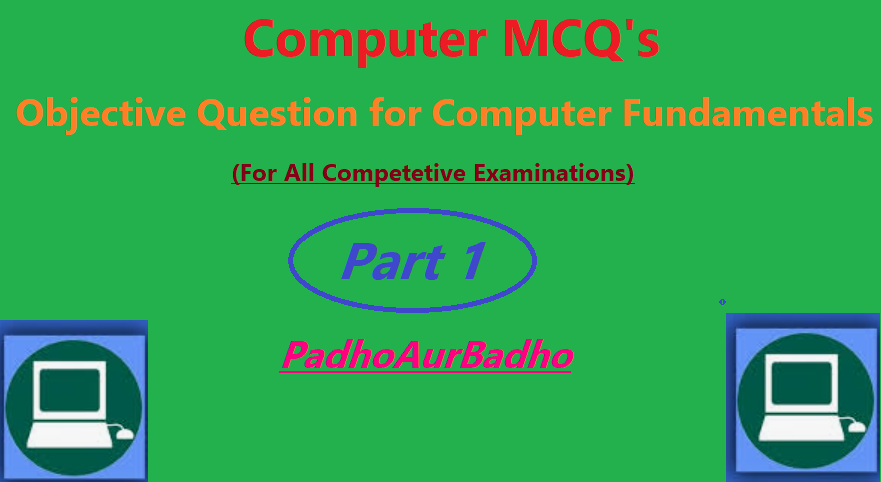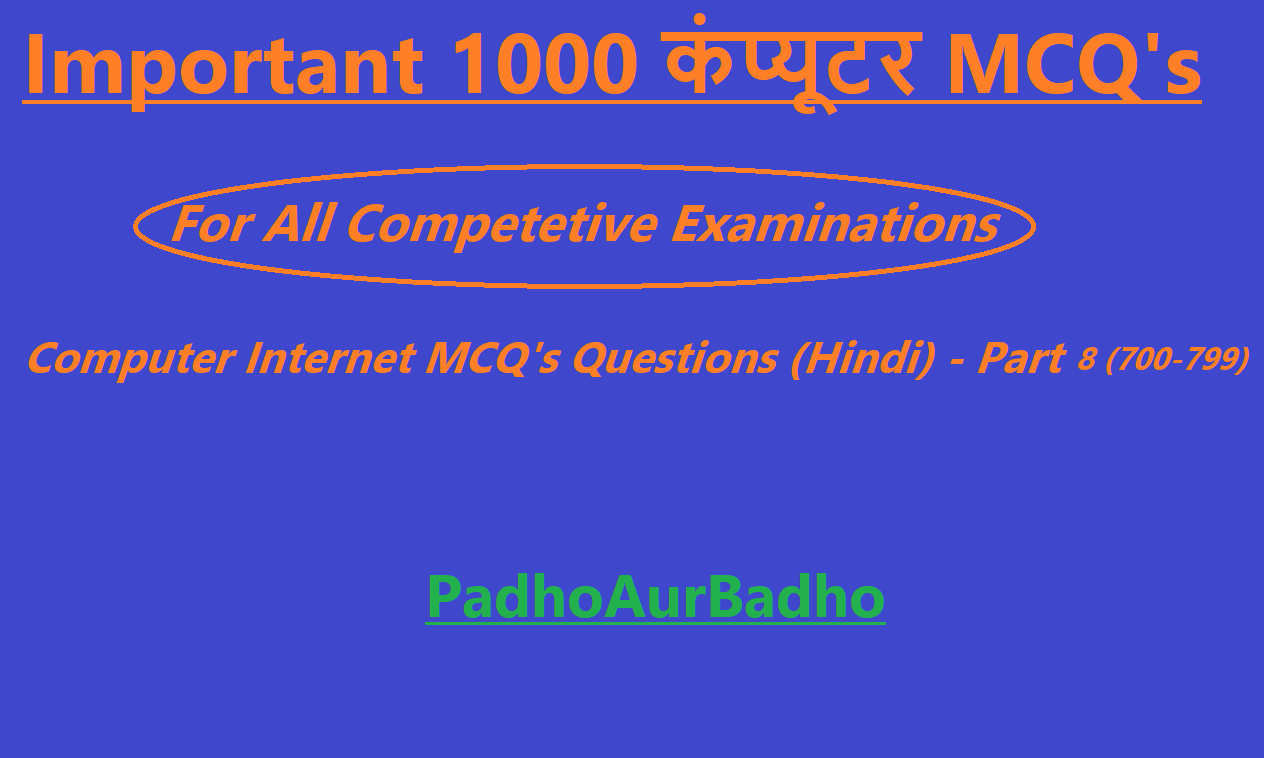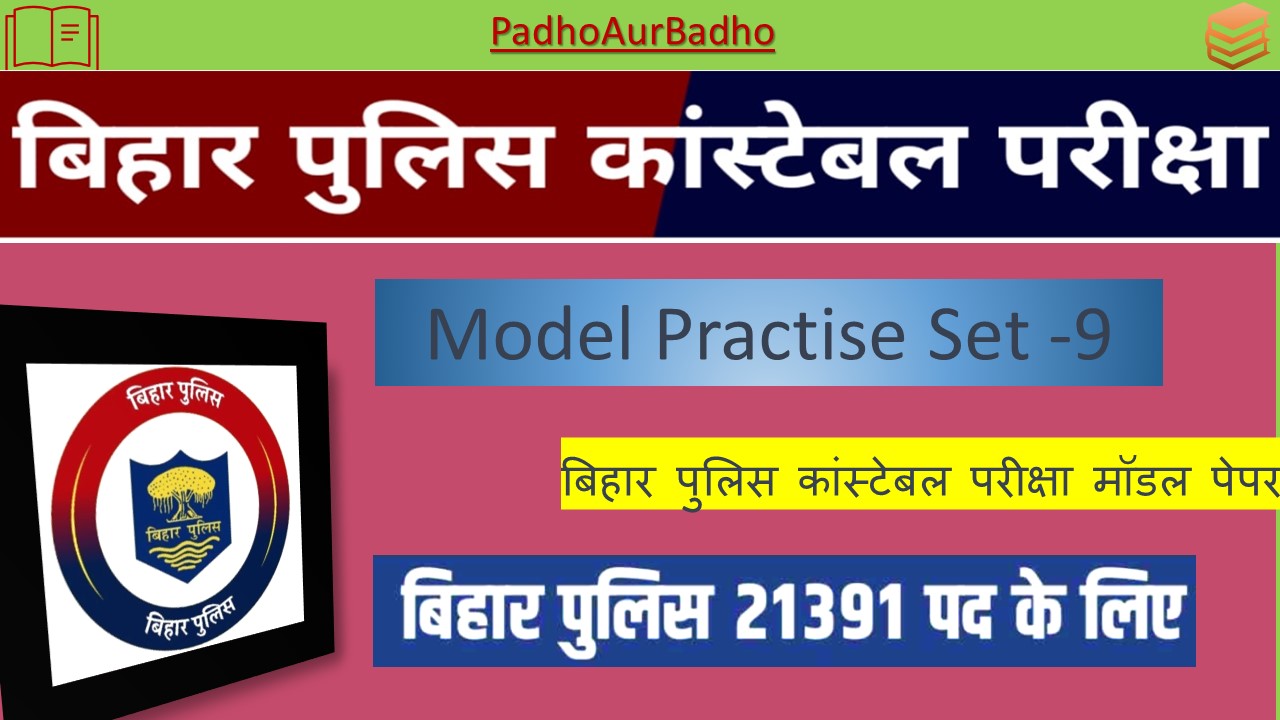दोस्तों आपलोग अगर General Competition परीक्षाओं की तयारी करते हैं तो आप सभी को बता दूँ की Computer से related topics को यहां से पढ़ सकते हैं, यहां सभी परीक्षाओं के लिए Computer के महत्वपूर्ण Topics को कवर किया जाएगा| This is the very first MCQ’s related to Computer Fundamentals. Please read the MCQ’s and try solve it from your end. Click on View Answer to check the correct Answer.
Note – please let us know if you find any answer incorrect.
1. The earliest calculating devices are:
-
- Clock
- Difference Engine
- Abacus
- Calculator
C. Abacus
2. The basic operations performed by a computer are:
- Arithmetic Operations
- Logical Operations
- Storage and relative
- All of the above
- None of the above
D. All of the Above
3. The man who built the first Mechanical Calculator was:
-
- Joseph Marie Jacquard
- John Mauchly
- Blaise Pascal
- Harward Ailken
- None of these
C. Blaise Pascal
4. Punched cards were first introduced by:
- Powers
- Pascal
- Jacquard
- Herman Hollerith
D. Herman Hollerith
5. Computers built before the First Generation of Computers were:
-
- Mechanical
- Electro-mechanical
- Electrical
- All of these
- None of these
B. Electro-mechanical
6. IBM stands for:
- Indian Business Machines
- International Business Machines
- International Banking Machines
- International Business Model
- None of these
B. International Business Machines
7. Analog computer is
- is a means of communicating with at a low level
- a device that operates on data in the form of continuously varying physical quantities.
- is an algebraic high level language
- All of the above mentioned
- None of these
D. All of the above mentioned
8. Which of the following options correctly expresses the meaning of the term ‘PCs’?
- Independent computers for all working staff
- Personal Computers widely available to individual workers with which they can access information from layer systems and increase their personal productivity.
- Packed computer system formed by joining together of various com- puter terminals
- Computer manufactured by the Pentium Company
- None of these
B. Personal Computers widely available to individual workers with which they can access information from layer systems and increase their personal productivity.
9. What are ‘Laptops’?
- Computers used in Clinical Laboratories.
- A computer manufactured by Compaq
- A computer having voice recognition system
- Lightweight Computers, small enough to fit in a small suitcase
- None of these
D. Lightweight Computers, small enough to fit in a small suitcase
10. A supercomputer
- Processes data from many (at least 10,000) users at once
- is the fastest and the costliest computer system
- is used by large organizations
- all (a), (b) and (c)
- None of these
D. all (a), (b) and (c)
11. A portable computer
- has low memory
- is the computer that is used by business people
- is compact and lightweight enough to be transported from place to place
- either(a) or (b)
- none of these
C. is compact and lightweight enough to be transported from place to place
12. Which of the following statements is not true?
- A notebook computer weighs less and actually looks like a notebook
- A palmtop computer weighs at most a few pounds and can fit into a pocket
- A palmtop computer is also called a pio-computer
- The portable computers can be connected to larger desktop PCs or other computers
- None of these
C. A palmtop computer is also called a pio-computer
13. The basic architecture of computer was developed by:
- John Von Neumann
- Charles Babbage
- Blaise Pascal
- Gorden Moore
- None of these
A. John Von Neumann
14. What does CPU stand for?
- Central Processing Unit
- Central Process Unit
- Central Printing Unit
- Central Peripheral Unit
- None of these
A. Central Processing Unit
15. ALU stands for:?
- Arithmetic Long Unit
- Arithmetic and Logical Unit
- All Longer Units
- Around Logical Units
- None of these
B. Arithmetic and Logical Unit
16. The part of computer system containing the circuitry that does the add-ing, subtracting, multiplying, dividing and comparing is called as:
- Arithmetic and logical unit
- Memory
- CPU
- Control
- None of these
A. Arithmetic and Logical Unit
17. Arithmetic functions of the ALU include:
- Add, Subtract, Move and Input
- Divide, Multiply, Compare and Output
- Input, Output, Move and Compare
- Add, Subtract, Divide and Multiply
- None of these
D. Add, Subtract, Divide and Multiply
18. Peripherals are:
- A part of the CPU
- Output device alone
- Input device alone
- Input, Output and secondary storage devices
- None of these
D. Input, Output and secondary storage devices
19. Parts of CPU are:
- ALU, CU, MU
- ALU, Peripherals, Memory
- RAM, ROM, CU
- ALU, RAM, ROM
- None of these
A. ALU, CU, MU
20. COMPARE is a:
- Arithmetic function of the ALU
- Logical Function of the ALU
- Input-Output Function of the ALU
- All of the above
- None of the above
A. Arithmetic function of the ALU
21. Input/Ouput Devices:
- Mouse
- Keyboard
- Light pen
- VDU
- None of these
D. VDU
22. A light-sensitive device that converts drawings, printed text or other images into digital from is
- Keyboard
- Plotter
- Scanner
- OMR
- None of these
C. Scanner
23. Which of the following is a term related with scanners?
- Laser
- TWAIN
- Catridge
- Media
- None of these
B. TWAIN
24. Which of the following is a CRO (Cathode ray Oscilloscope)
- Monitor
- Printer
- Scanner
- Digital Camera
- None of these
A. Monitor
25. Which of the following is not an output device?
- LCD
- Printer
- CRT
- Touch Screen
- None of these
D. Printer
26. With the help of proper software, the mouse can also be used to:
A. Draw pictures
B. Make ideal graphics
C. Type text
D. Both a and b
E. None of these
D. Both a and b
27. The OMR (Optical Mark Reader) can read about …… hour documents per of the characters with the help of light:
- 10
- 100
- 10,000
- 1,00,000
- None of these
C. 10,000
28. The OCR recognise the source.
- Size
- Shape
- Colour
- Used ink
- None of these
B. Shape
29. The reading speed of MICR is about … document/ minute.
A. 24
B. 240
C. 24000
D. 2400
E. None of these
D. 2400
30. An electro mechanical device that draws pictures or diagrams under computer control is:
A. Plotter
B. Printer
C. Light pen
D. All of the above
E. None of these
A. Plotter
31. The conducting material that was coated inside the screen of CRT is:
A. Germanium
B. Silicon
C. Aquadag
D. Either (a) or (b)
E. None of these
C. Aquadag
32. The keys of a keyboard are:
A. Alphanumeric keys
B. Functional keys
C. Arrow keys
D. All of the above
E. None of the above
D. All of the above
33. Which input device widely used for playing video games in computers
A. Joy stick
B. Tracker ball
C. Both a and b
D. OMR
E. None of the above
C. Both a and b
34. The mouse generally does have
A. Two buttons
B. Three buttons
C. Several buttons
D. Either a or b
E. None of the above
D. Either a or b
36. The OCR is used for the preparation of:
A. Electricity bills
B. Insurance Premium
C. Telephone Bills
D. All of the above
E. None of these
D. All of the above
37. Speed of Line printer is limited by the speed of:
A. Paper movements
B. Cartridge used
C. Length of paper
D. All of the above
E. None of the above
A. Paper movements
38. In Laser printers, printing is achieved by deflecting Laser beam on to______________ surface of a drum.
A. Magnetised
B. Photosensitive
C. Magnetic
D. Either(a) or(b)
E. None of these
B. Photosensitive
39. Resolution of laser printer is specified in terms of J
A. DPI
B. LPM
C. CPM
D. PPM
E. None of these
A. DPI
39. What are the units used to count the speed of a printer?
A. CPM
B. DPI
C. PPM
D. BIT
E. None of these
D. BIT
/*54745756836*/



